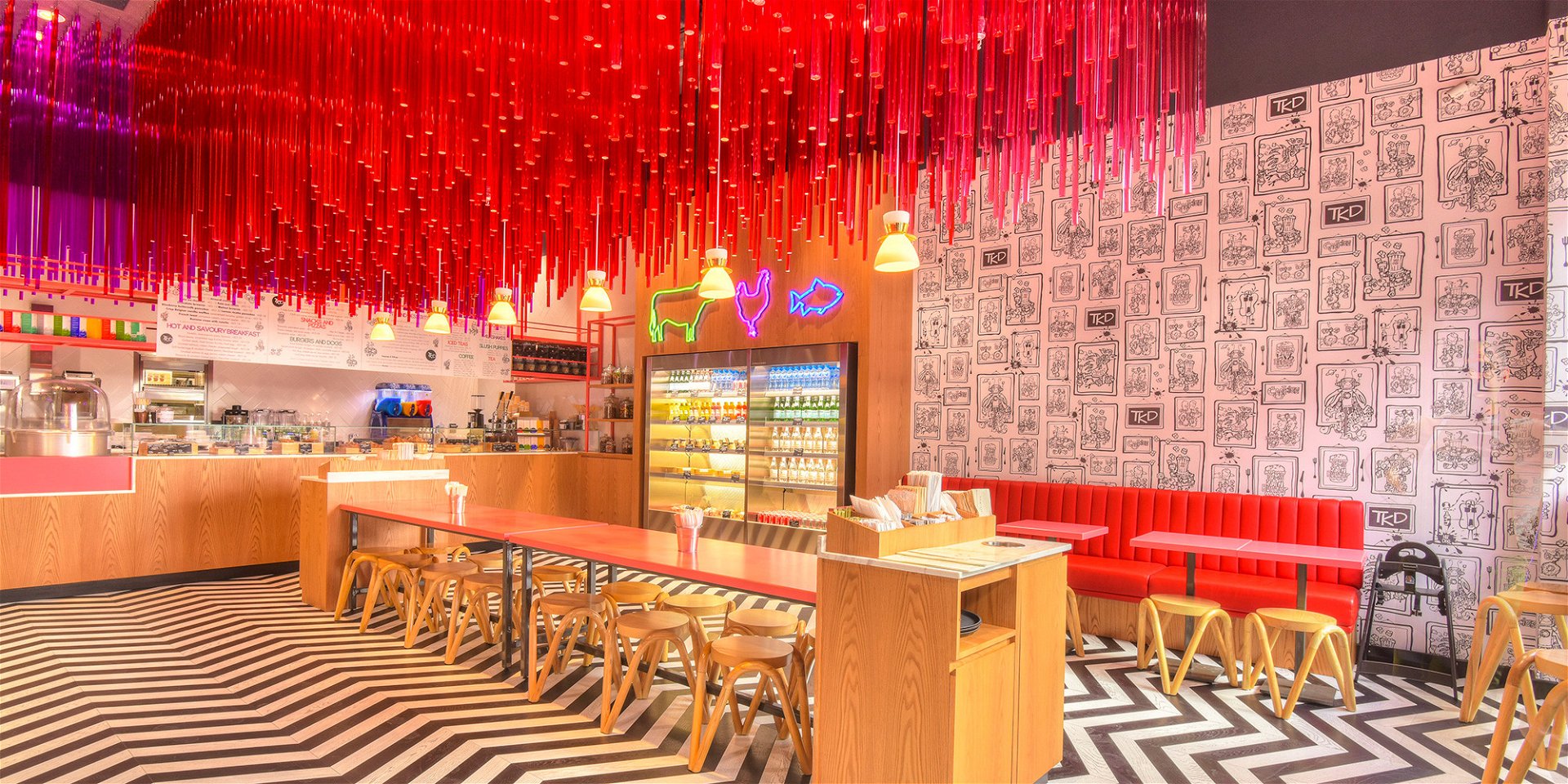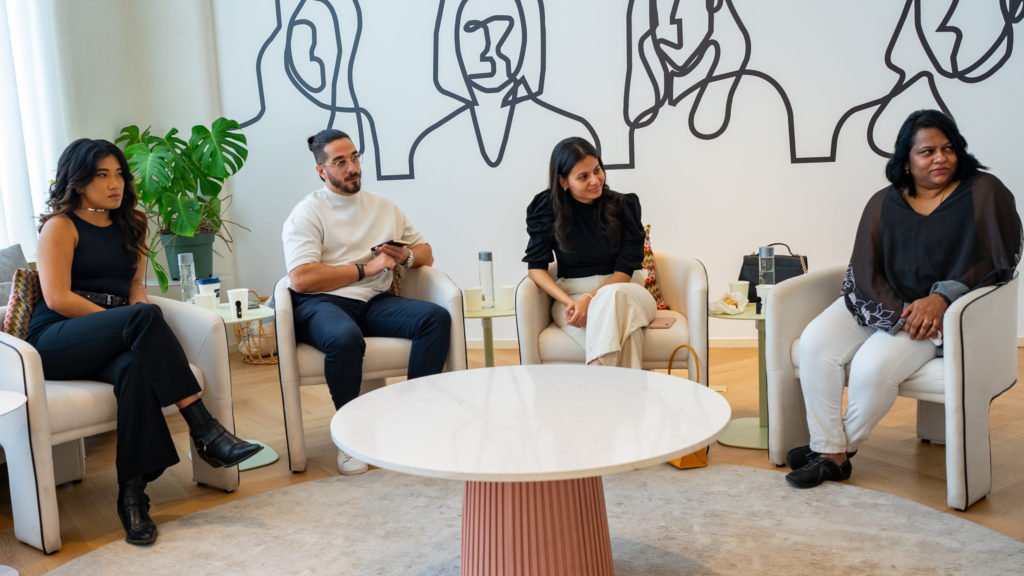There is a highly influential and at times intimidating class of clientele in town. They are not based out of a corporate office, and they certainly do not attend standard networking events. They are cross-platformed, cloud-based and will double-tap or swipe you left to right on a whim. They are the Instagrammers, Snapchatters, Facebookers, bloggers or just about anyone with an active presence on social media or platforms such as Zomato or Yelp. And businesses want to make sure they’re on their radar.
Why is Social Media Important for Interior Design in the Hospitality Industry?
Because there are more people closely examining your restaurant by accessing their phone than there are people waiting in line outside your door. The tech-savvy folk looking for the location of their next business lunch or birthday dinner have already made their decision within 30 seconds of scrolling through your photos, so it’s important that your interiors do your food justice. Instagram-friendly designs are a thing now, believe it or not.
We’ve never shied away from admitting how much we love technology and its influence on design. But if you want specific proof that shows just how much impact social media has on design intent check out Zomato’s Insta-Worthy Restaurants, a curated list of dining spots offering the best photo ops in the United Arab Emirates, of which Paper Fig, Parker’s and The Sum of Us are featured on Love That Design. It goes to show how much demand there is for dining at places that offer experiences beyond “just” food. No detail is too small, with the simplest of elements like funky artwork or retro-themed lighting determining how many shares you can get. Business owners are engaging designers and vice versa to consider restaurant spaces in a holistic manner, and not just the technical points like the presentation of food or how good the visual merchandising is.
An often over-looked strategy by restaurateurs is leveraging the use of hashtags not related to food. One such example LOVED by millennials is the photo op that engages a particular background like it’s a studio set; picture posing in front of a mural, standing in front of a portrait of angel wings and adding #angelwings or #heavenly. It contains nothing related to food, but you can bet those trending hashtags will eventually lead people to find your restaurant. Nothing like having as many conversation starters as possible.
We talk to top designers in the region to get their take on the subject, and to understand whether an Instagram-worthy tag is important to their designs
A Picture Is Worth a Thousand Words
 Designing and integrating more “Post, Like, Share” spots into a restaurant space or a retail outlet results in a better user experience. A positive customer experience is likely to translate into some form of content being shared online. If the visual component is of high quality, you can be guaranteed of an exponential increase in online chatter, a.k.a free organic advertising!
Designing and integrating more “Post, Like, Share” spots into a restaurant space or a retail outlet results in a better user experience. A positive customer experience is likely to translate into some form of content being shared online. If the visual component is of high quality, you can be guaranteed of an exponential increase in online chatter, a.k.a free organic advertising!
LXA, the studio behind the iconic Intersect by Lexus at DIFC, is well aware of how critical it is to impress both physically and virtually speaking. According to Karma Zahran, Senior Interior Designer at LXA, “[The] digital revolution is in full swing. The UAE is today globally known for its high level of digital development and speed of digital evolution. With the power of social media constantly evolving and growing, Instagram and other social media platforms are becoming the ‘go-to’ place for trends and visual inspiration. At LXA, we design with the next Instagram moment in mind. A successful space does not only need to operate effectively, it also needs to look aesthetically pleasing, while visitors engage with their surroundings. We consider particular features and textures when designing projects for our clients and visitors who want to stop and capture a moment. A picture is worth a thousand words, and in Instagram’s case, a thousand likes.”
Through social media driven design concepts, establishments are also able to convey messaging beyond just the obvious related food or products. Talking points such as themed restaurants or unique attractions generate buzz that attracts a wide range of people – those seeking an experience and not just a good product or service. All of this is pre-judged from content seen online, which means businesses strive to put their best foot forward.
The Hospitality Industry Is Using Social Media To Attract Millennials
 What a 5-star experience means today is a bit different than what it meant at the start of this decade. An addition to the mix of high-quality services, amenities and locations provide opportunities to capture and share your next popular Instagram moment.
What a 5-star experience means today is a bit different than what it meant at the start of this decade. An addition to the mix of high-quality services, amenities and locations provide opportunities to capture and share your next popular Instagram moment.
Sharing vacation pictures is all the rage now, and the quality of stay is obviously an important component to the overall holiday experience. The hospitality industry realizes this and is taking to social media to attract the content-hungry crowd. By carefully constructing and providing settings that facilitate this – natural lighting, scenic backdrops, hotel rooms with views, biophilic elements – they aim to craft an online presence that lures millennials who value these experiences.
According to Yasmin Farahmandy, Interior Design at Gensler, “social media exploded and supported the new approach to sharing experiences. One of the biggest trends in hospitality is about experiential design. Thanks to Instagram, Pinterest, Facebook and similar platforms we have the opportunity to share the places we go to and stay in with a constantly large international platform of different communities. The new hospitality brands targeting the Millennials have understood this enormous breakthrough and are increasingly investing in new strategies to give full accessibility and to ease the process of sharing our visual memories.”
Taking Advantage of the Selfie
 While food is 9 out of 10 times the deal-breaker in terms of the dining experience, designers and owners alike can cleverly use interior design and architecture to draw attention to several elements of the space that would otherwise go unnoticed.
While food is 9 out of 10 times the deal-breaker in terms of the dining experience, designers and owners alike can cleverly use interior design and architecture to draw attention to several elements of the space that would otherwise go unnoticed.
Julia Dempster, Owner and Managing Director at Interior Motives, does just this. “We have literally just designed an entire hotel around the concept of having spots throughout the hotel where they stand for a selfie. I personally think designers have to keep up with the trends, understand how the new generation look at the world, and what impact this is having on how we as a community design hotels.”
By taking advantage of a seemingly insatiable need to generate and consume digital social content, one can highlight aspects of hotels and restaurants that define the culture and identity of the business. Popular eateries like Clinton Street Baking Company have incorporated several design features that highlight their New-York roots, as well as their presence in Dubai, with the mural seen often on various platforms.
Millennials may move on from their compulsion to post their experiences and surroundings, but social media is here to stay; the result is that the architecture and design community has to prioritise understanding social media on a deeper level and how much the success of restaurant or hotel spaces depends on its influence. It’s now or never.







